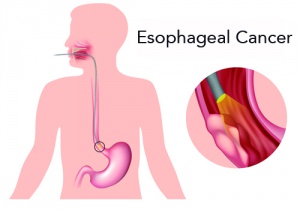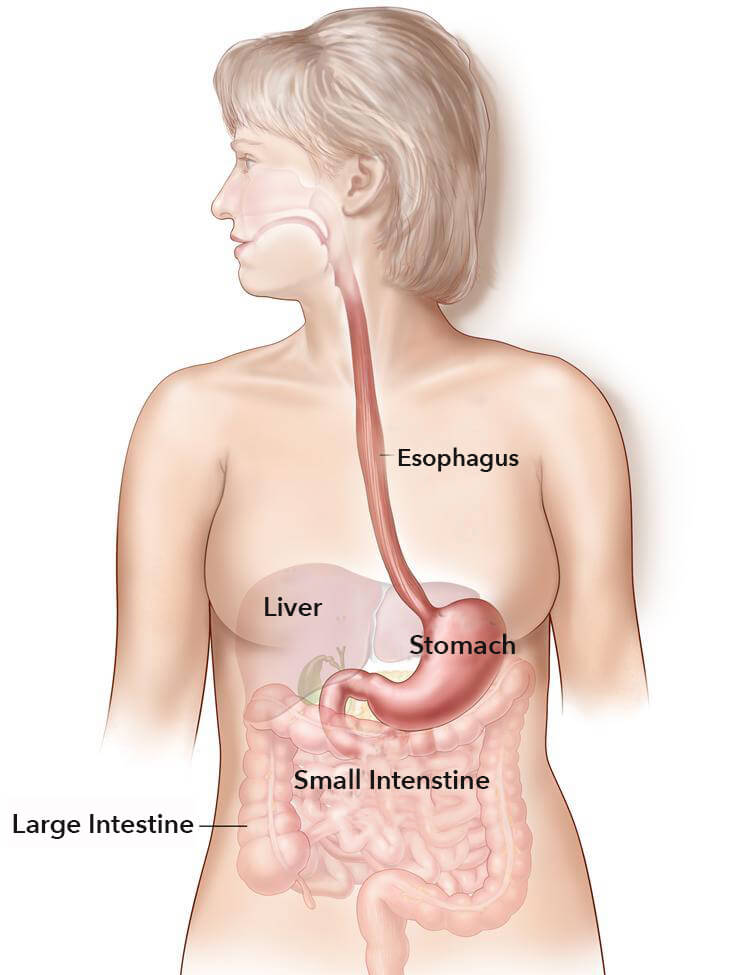Symptoms of the Most Significant Esophagus Diseases


Written and verified by psychologist Valeria Sabater
Esophagus diseases are many and they can be dangerous. The esophagus plays a vital role in our body.
It is responsible for transporting both food and liquids, but we only notice its existence when we swallow something very large or we ingest something that is colder or hotter than we are used to.
There are changes that you should keep in mind when it comes to your health, aspects that sometimes go unnoticed and that are worth knowing about.
We’ll explain below.
The most common problem associated with the esophagus is undeniably gastroesophageal reflux disease.
But there are other disorders and diseases that have specific traits and afflictions that could prohibit us from nourishing ourselves normally or that could stop us from ingesting the nutrients we need.
However, let’s take a step by step look at each one of these problems that affect this organ in our body.
See also: Combat Symptoms of Oesophagitis With 5 Natural Remedies
Esophagus diseases and their symptoms
1. Achalasia
What is it?
Achalasia is a disease that is sometimes hereditary where the esophagus (formed by a type of ring) stops contracting and stops transporting food to the stomach normally.
Symptoms
- A sensation that the food you eat remains in the esophagus and difficulty swallowing.
- Intermittent onset, but little by little, you also have difficulty ingesting liquids.
- When you lie down, you feel nauseous or we gag up a thick liquid.
- When you vomit, pieces of food come up, but you do not taste the bile that you normally do when you throw up because that food has not yet reached the stomach.
- Cough
- Episodes of Pneumonia.
- Pain in your chest that spreads to your back and your mandible.
- Weight loss.
2. Gastroesophageal Reflux Disease
What is it?
We know that the stomach separates acid and pepsin, which are fundamental for the digestion of food.
But the valve that separates the esophagus from the stomach might have a problem and allow these acids to spread to the esophagus, thus causing damage to it.
Symptoms
- Burning sensation in the chest and the throat.
- A sensation that what you eat returns to your throat.
- Sudden leaks of gastric fluid that goes up to your throat, irritating it.
- A sensation of asphyxia at night.
- Vomiting up blood.
- Dark bowel movements.
- Weight loss.
Read also: Everything You Don’t Resolve in Life Comes Back to You
3. Esophageal Varices
What is it?
Esophageal varices are dilated abnormal veins located on the end of the esophagus and they are connected to the liver. But when our liver is sick, varices can break.
This is a serious problem.
- If you suffer from this disorder, you normally have very dark bowel movements.
- Recurring vomiting with the appearance of blood or with traces that look like coffee.
- Dizzy spells sensation of cold, weakness…all symptoms that suggest a loss of blood.
4. Cancer of the Esophagus or Esophageal Cancer
Cancer of the esophagus occurs when some malignant cells attack its tissue and its structure, invading it. The reasons this cancer occurs are almost always because of tobacco use. However, a very small percentage of cases are brought about by unknown reasons.
Symptoms
- Difficulty swallowing both liquids and solid foods.
- Patients notice that their saliva is thicker.
- Chest pain.
- Pain when swallowing, and acidity, this is why cancer of the esophagus is often confused with gastroesophageal reflux disease.
- Weigh loss.
- A persistent and constant cough.
- Hiccups.
- Episodes of pneumonia.
- General bone pain and extreme exhaustion.
- Anemia. You start to lose blood internally, your bowel movements are dark and you feel nauseous
Did you find the information on esophagus diseases useful?
All cited sources were thoroughly reviewed by our team to ensure their quality, reliability, currency, and validity. The bibliography of this article was considered reliable and of academic or scientific accuracy.
- Kuo B, Urma, D. Esophagus – anatomy and development. GI Motility Online. 2006.
- Katz P, Gerson L, Vela M. Guidelines for the Diagnosis and Management of Gastroesophageal Reflux Disease. American Journal of Gastroenterology. 2013;108(3):308-328.
- Society, A. C. Esophagus Cancer. American Cancer Society. 2014
- Boeckxstaens G, Zaninotto G, Richter J. Achalasia. The Lancet. 2014;383(9911):83-93.
- Prieto R, Prieto J, Casas F, Ballén H. Acalasia, una visión actual. rev. colomb. cir. 2019; 34( 2 ): 171-178.
- Escorsell Á, Bosh J. Hemoragia digestiva variceal. GH continuada. 2005; 4 (3): 97-102.
- Ramírez A, Fluxa F. ESÓFAGO DE BARRETT: REVISIÓN DE LA LITERATURA. Revista Médica Clínica Las Condes. 2015;26(5):557-564.
- Arenas J, Montalvo I, Gil I. Esofagitis infecciosa. Gastroenterología y Hepatología. 1999; 22(6): 302-308.
This text is provided for informational purposes only and does not replace consultation with a professional. If in doubt, consult your specialist.









